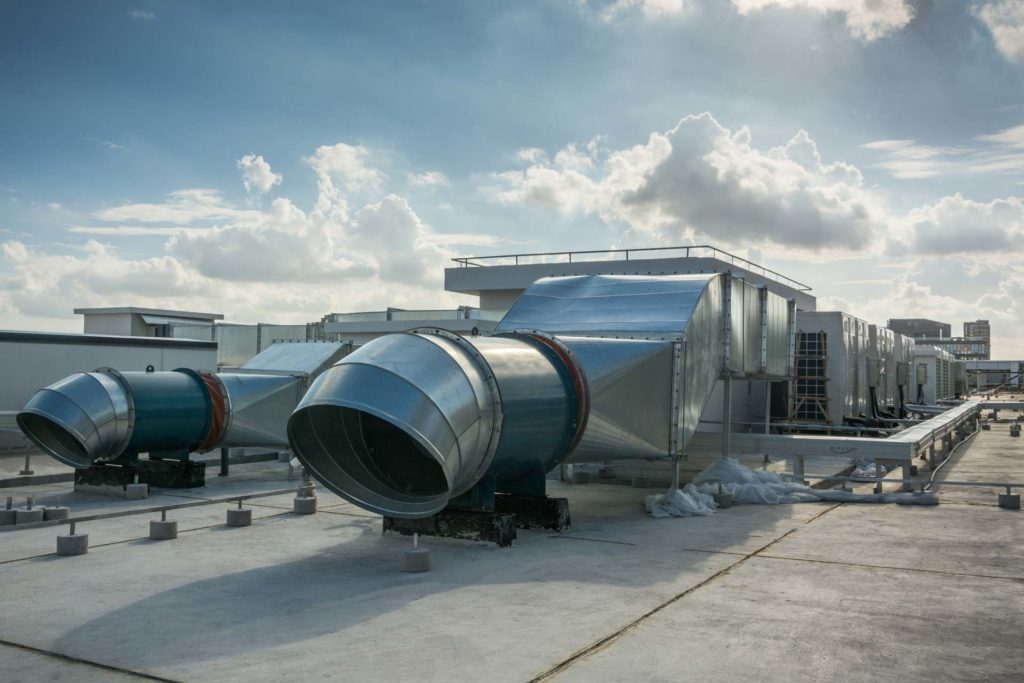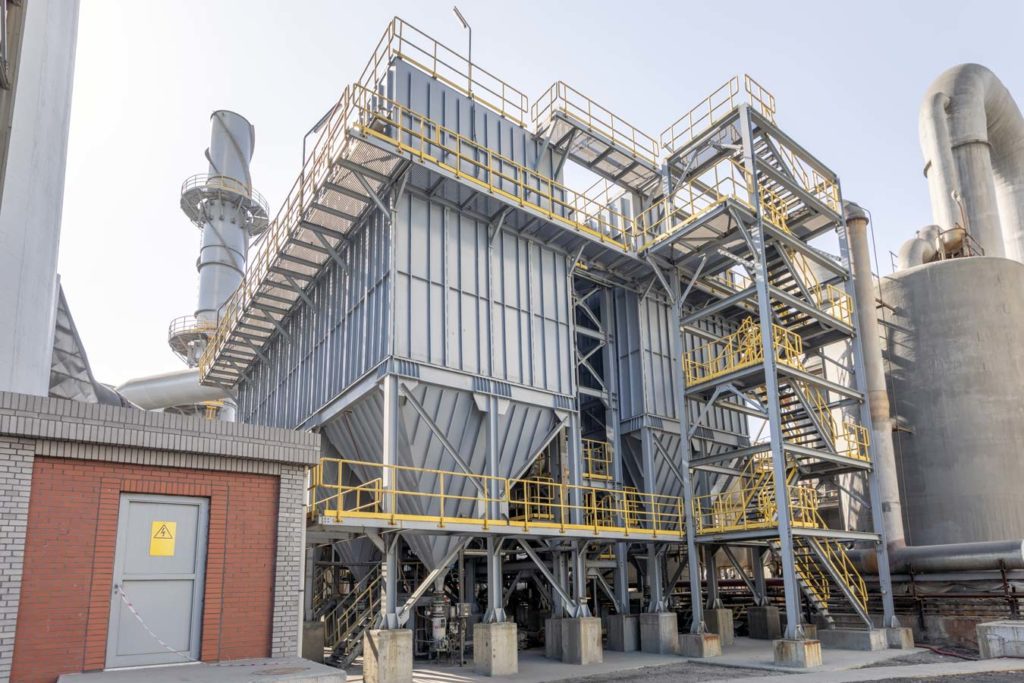originally published July 2024 – updated August 2025
Dust collectors are robust air filtration systems designed to remove airborne dust, debris, and other particulates from industrial environments.
By improving indoor air quality, they protect workers, reduce equipment wear, and keep facilities compliant with safety and environmental regulations.
In this article, we’ll walk through how dust collectors work, outline the main types available, and highlight the key benefits they deliver. Whether you manage a small shop or a large-scale manufacturing plant, understanding these systems can help you choose the right solution for your operation.
Why Dust Collectors Matter
Dust collectors are a critical part of any industrial facility, protecting employees, equipment, and the surrounding environment. Without them, airborne particles can quickly lead to health risks, operational downtime, and compliance issues.
- Health & Safety: Captures harmful dust to reduce respiratory hazards and protect workers.
- Environmental Impact: Lowers particulate emissions, helping facilities minimize their environmental footprint.
- Regulatory Compliance: Maintains adherence to OSHA, EPA, and local air quality standards, reducing the risk of fines or shutdowns.
- Equipment Longevity: Prevents dust buildup that can damage machinery and shorten equipment life.
Core Components of a Dust Collector and How They Work
A dust collector is designed to pull contaminated air through a series of components that capture and contain airborne particles. When each part is working correctly, you get cleaner air, better compliance, and longer equipment life.
1. Air enters the collector
An industrial fan draws dusty air into the collector’s inlet. This fan is essentially the system’s engine and creates the airflow needed to move particles through the system consistently. An undersized or underperforming fan can quickly reduce efficiency.
2. Filter bags capture dust
Inside the housing, the air stream passes through filter bags made from durable woven or felted fabrics.
These bags trap dust on their surface while allowing clean air to pass through. Over time, a thin “dust cake” forms, which improves filtration until it’s cleaned away.
3. Cages keep the filters in place
Cages — metal support frames — hold each filter bag open under airflow pressure. Without cages, the bags could collapse, reducing surface area and lowering filtration efficiency.
4. Dust is collected and discharged
As dust falls from the filter bags, it lands in the hopper, a funnel-shaped chamber at the bottom of the collector.
The hopper channels material into a bin or conveyor, keeping dust out of the airstream and simplifying disposal.
5. Filters are cleaned automatically
To maintain peak performance, the system periodically activates its cleaning mechanism. Depending on the collector, this may be a pulse-jet burst of compressed air, a mechanical shaker, or a reverse-air system.
Cleaning removes the dust cake from the filter bags without disrupting airflow.
6. Clean air exits the system
After filtration, clean air is exhausted back into the facility or safely vented outdoors. This final step ensures your operation meets strict air quality and environmental standards.
Every component in a dust collector plays a critical role. If one part is undersized, poorly maintained, or out of sync, your entire system’s efficiency and compliance can be compromised.
Dust Collector Filter Materials
Choosing the right filter media is one of the most important decisions you can make for your dust collection system. The correct material directly impacts filtration efficiency, filter life, and how well your system handles specific types of dust and operating conditions.
Nanofiber
Nanofiber media excels at capturing extremely fine dust particles, such as those generated in pharmaceutical manufacturing, powder coating, and food processing.
These ultra-thin fibers form a surface layer that traps particles before they can embed in the filter, making them easier to clean and maintain.
Advantages: High filtration efficiency, excellent surface loading characteristics, and simplified cleaning cycles.
80/20 Cellulose
An economical choice, 80/20 cellulose is best suited for light-duty, non-abrasive dust applications. It provides reliable filtration at a lower cost, making it popular in general-purpose environments with minimal dust loading.
Advantages: Cost-effective, good initial efficiency, and well-suited for low to moderate dust levels.
Polyester
Polyester filter media is a workhorse in demanding applications like woodworking and metal fabrication. It’s durable enough to handle high dust loading and abrasive particles while offering a longer filter life than cellulose-based options.
Advantages: Resistant to abrasion, robust under challenging conditions, and provides extended service life.
Polyester with PTFE (Polytetrafluoroethylene)
This enhanced version of polyester media features a PTFE membrane, making it ideal for sticky, moist, or challenging dust types common in chemical processing and food production. The membrane prevents dust from embedding in the media, which improves filter cleanability and consistency.
Advantages: Superior dust release properties, moisture and chemical resistance, and long-term durability.
Aramid
Aramid media is built for extreme environments. Commonly used in foundries, cement plants, and power generation facilities, it withstands high temperatures and resists degradation when exposed to harsh conditions.
Advantages: Exceptional heat resistance, strong integrity under stress, and extended filter life in high-temperature applications.
Pro tip: Using the wrong media can shorten filter life and compromise system performance. When in doubt, work with a supplier who can match your operating conditions to the correct filter material.
Matching the Right Dust Collector to Your Workflow
Not all dust collectors are designed for the same challenges. The type of system you choose should match your facility’s dust characteristics, space limitations, and operating environment. Here’s how to determine which is best for your needs:
Handling high-volume or abrasive dust?
A baghouse collector is often the most reliable choice. Its large filter area and durable filter bags are built to handle heavy dust loads and harsh conditions like high temperatures or abrasive particles.
Tight on floor space?
Cartridge collectors are compact and offer a large filtration surface area in a smaller footprint. They work well in shops or plants where space is limited and dust volume is moderate.
Dealing with sticky or moist dust?
A wet scrubber or a cartridge collector with PTFE-coated filters can prevent clogs and performance issues. These systems are designed to manage dust that would otherwise embed into filters or cake up quickly.
Need to pre-filter larger debris?
A cyclone separator can be installed as a first stage to knock out heavier particles before they reach the central collector. This process reduces filter wear and maintenance on baghouse or cartridge systems.
Need portability?
Portable dust collectors are designed for flexibility. They’re best for small shops or temporary workstations where you need localized dust control.
There’s no one-size-fits-all solution. Baghouse America can evaluate your dust type, airflow requirements, and operating conditions to recommend a system that performs reliably in your environment.
Finding the Right Dust Collector with Baghouse America
As industries continue to prioritize health, safety, and environmental responsibility, effective dust collection systems are becoming more essential than ever.
With over 20 years of hands-on experience, Baghouse America can help you identify the right system for your operation. We deliver premium products at a fair price and back them with upfront, honest guidance so you can make a confident, informed decision.
Contact us today for a quote and let us help you protect your people, your equipment, and your bottom line.

